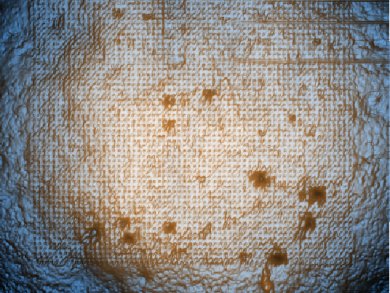Understanding the caking behavior of powders can be difficult due to the many factors affecting caking and the complex interactions between individual particles. In order to gain a greater understanding of the particles themselves and their properties, scanning electron microscopy is normally used.
There are, however, disadvantages to this technique and Dominic Prime, De Montfort University, UK, and colleagues at Loughborough University, UK, and Massey University, New Zealand, have now shown that atomic force microscopy (AFM) can be employed to overcome these drawbacks.
By using AFM, the surface material properties of particles were differentiated, to reveal soft, oil rich areas distributed regularly across the particles’ surface (see image). Changes in powder topography as a function of humidity and temperature cycling were also examined; experiments that would not have been possible with conventional imaging techniques.
- Analysis of Powder Caking in Multicomponent Powders Using Atomic Force Microscopy
D. C. Prime, A. G. F. Stapley, C. D. Rielly, J. R. Jones, M. C. Leaper,
Chem. Eng. Technol. 2011, 34(1).
DOI: 10.1002/ceat.201000211


